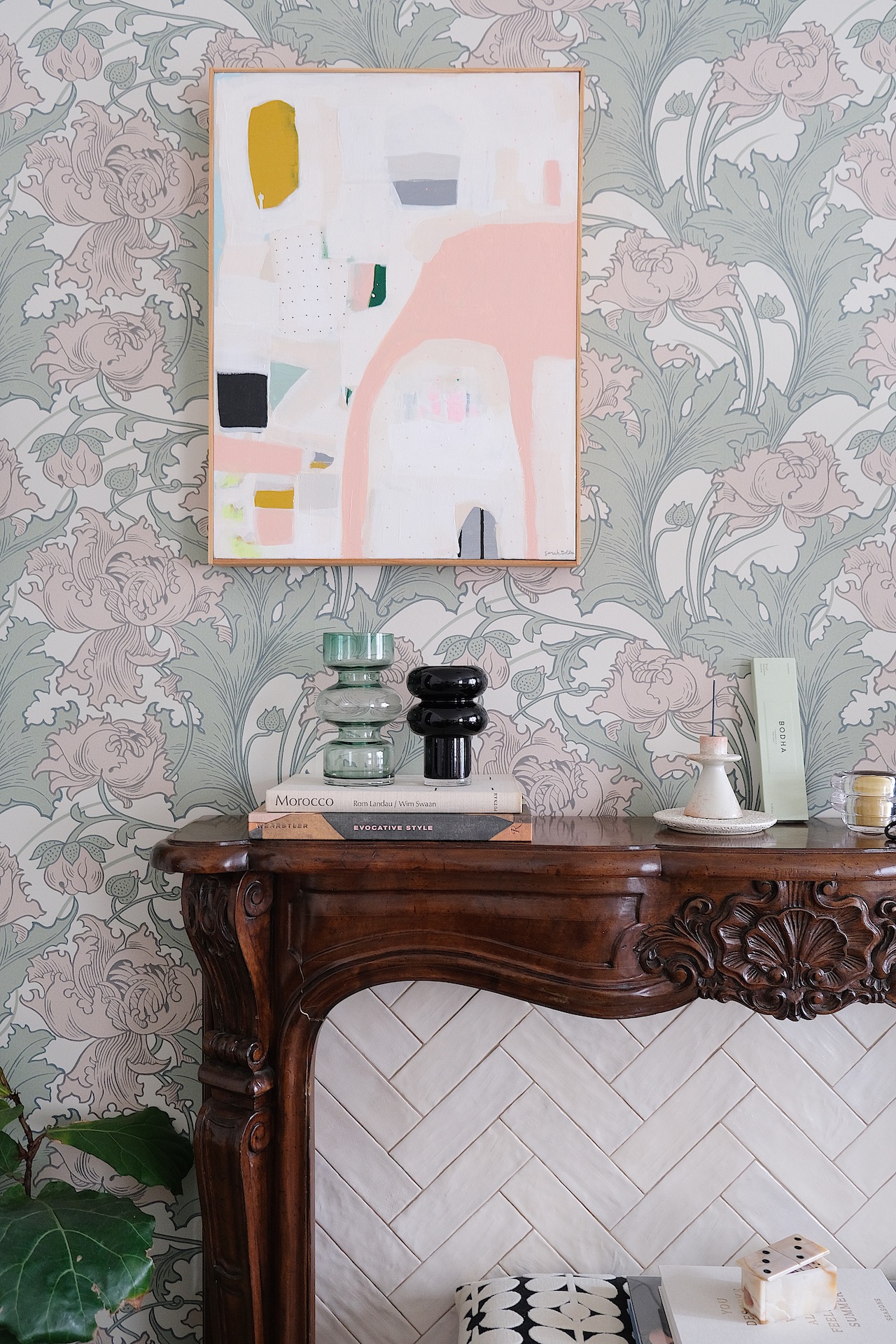We may earn revenue from the products available on this page and participate in affiliate programs.
When blogger Amal Iqbal and her husband decided to move into yet another rental apartment in San Diego, she knew this one had to be different from the last. Not ready to settle into a house but sick of the typical white box that California rentals often are, Iqbal got creative. “I was tired of waiting to buy a house in order to have a home,” she explains.
A DIYer at heart, Iqbal set out to transform the apartment’s stark walls into a personality-infused statement. After falling in love with a traditional wallpaper that required paste (which is as tricky to remove as it is to install), Iqbal would do anything to make it landlord-friendly—including making her own adhesive. “I just kept asking myself: What would be the worst thing that could happen?” she says. “So what if you mess it up? Clean it up and start over again.”
Iqbal originally set out to wallpaper the back of an IKEA Billy bookcase using a mixture of 1 cup water and ⅓ cup Elmer’s glue, since that was all she had left in the bottle. She didn’t love the results, but the DIY adhesive proved a happy accident: Iqbal was surprised at the ease with which the wallpaper came free afterward. Suddenly losing the security deposit was no longer a fear and she set about papering her living room.

The Supplies
- Elmer’s glue
- Water
- Liquid measuring cup
- Smoothing tool
- Small paintbrush
- Clothespins (optional)
Step 1: Prep the Foundation
While eagerness is a good thing, don’t just jump in and start applying the wallpaper right away. Ensure your walls are smooth and clean: Sand over any Spackle; wipe surfaces down with warm, soapy water; and then let them dry. This will help the application process go as smoothly as possible and make the material stick longer, too.
Step 2: Practice Makes Perfect
After mixing the adhesive, Iqbal recommends testing a patch on a small, inconspicuous area, like a shelf or a piece of spare poster board. “Test everything,” she stresses. Knowing your technique before jumping in can help speed up the process, too: No more double-checking instructions while balancing precariously on a ladder.
Step 3: It’s Go Time
Once you feel confident in the general process, start in the middle of the wall. It seems counterintuitive, but applying in the center first can make all the difference when it comes to straightening up the edges (not all rental walls are created evenly).
Iqbal suggests applying the wallpaper 6 to 8 inches at a time and keeping the remainder of the roll secure with clothespins. Using the paintbrush, apply the glue 6 to 8 inches down the wall, then lay the wallpaper on top and smooth from the center toward the edges with the smoothing tool. From there, it’s as easy as unroll and repeat until you’ve covered your desired surface.
Step 4: Admire

The time-consuming but rewarding task of applying wallpaper can become skewed when you’re up close and personal for so long. Stand back and give the wall a once-over; that can help identify any problem areas—and it also allows you a chance to give yourself a pat on the back.
What only takes a handful of hours (it took Iqbal eight to complete a 9-by-10-foot wall) can transform an entire room. Plus when you’re ready to remove the wallpaper, simply pick a corner and peel at a 45-degree angle—simple as that.
